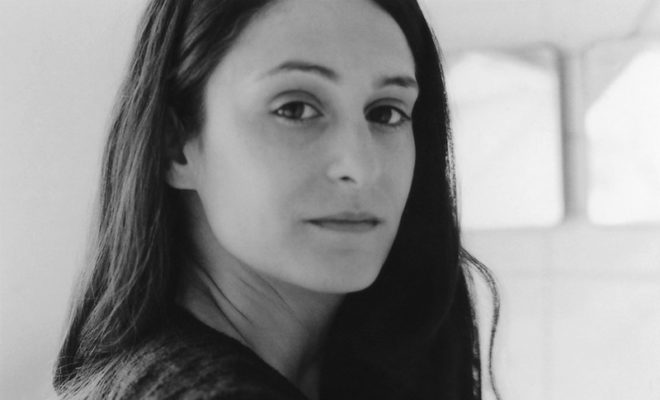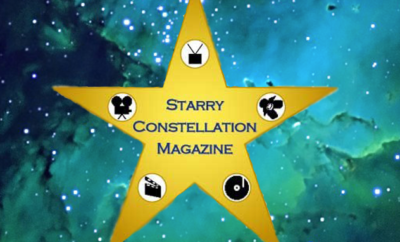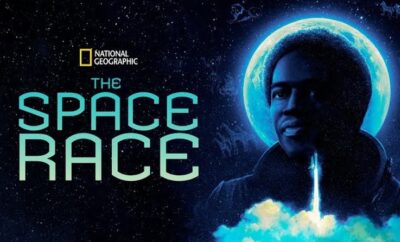 Carole Hamy
Carole Hamy
Interviews
Tessa Louise-Salomé – The Wild One
By: Jennifer Vintzileos
Q) How did you come to write, direct, and produce The Wild One?
A) The first time I met Jack Garfein was in 2015, after a producer friend of mine introduced us. And as we gradually developed a close bond, he decided to entrust me with the making of a documentary about his life. He shared his personal archives with me—over seventy-five years’ worth of materials. Then, after getting the project off the ground with the help of ARTE and MEDIA EUROPE, I was able to conduct extensive interviews with those closest to Jack—his children, his fiancé, actors who’d trained with him or starred in his work and writers, directors and film historians who’d known him personally. I was also able to film Jack’s testimony across numerous sites—Paris, New York, the Babelsberg Studio in Germany, the Flossenbürg Memorial—while at the same time working with the head researcher Rich Remsberg to locate essential historical materials for the film. It was a long process directing and financing this film, but executive producer Lynda Weinman came in at a decisive moment to support the project and we also had the help of the Claims Conference, along with the Jewish Film Institute and Jewish Story Partners.
Q) What was it about Jack Garfein’s story that compelled you the most?
A) I was compelled most of all by the complexity of Jack’s character and the uniqueness of his films. The extremes and contradictions of his life were astounding to me… How he not only survived the nightmare of the Shoah on his own at such a young age but went on to have a prodigious artistic career in the U.S only shortly after arriving there as an orphaned teenager. Then, there was the fact that his fall from grace was as precipitous and volatile as his rise to fame. There was Jack Garfein the prodigy and the protégé—of Strasberg, Piscator, Kazan—at the very center of the postwar theater world… and then there was Jack Garfein, the pariah, banished to the margins of Hollywood while his films were pushed to the fringes of American film history and nearly forgotten. And his films, too, are astonishing. They deal with violent subjects that rarely emerged in such a raw way in that period of film censorship and their style is darkly complex, filled with this brooding blend of noirish and modernist New Wave influences.
Q) Were there any moments or stories about Garfein’s life that surprised you?
A) Jack has so many extraordinary stories—ones that are sometimes so surreal or bound up in incredible chance, that they almost seem to be at the limit of truth and fiction. But then, when you fact check—which is absolutely necessary when you make a film of this kind and which I was able to do by finding certain articles and documents – you discover that each thing did in fact happen.
Q) The Wild One will have its world premiere at the Tribeca Film Festival. What does this accomplishment mean to you?
A) It was very meaningful to have the film premiere here at Tribeca. I feel it’s where it belongs, given that New York is such a central part of the film. It’s where Jack first lived as an immigrant Holocaust survivor in U.S and began his artistic career… Where Something Wild with Carroll Baker was shot, with New York City figuring as a kind of main character in the film. It’s also where the whole history around the Actors Studio began—the place that became a second home for Jack in the U.S. So, I was genuinely happy to be able to share the film for the first time here in New York.
Q) For those who have had the chance to see the film, what have been the overall reactions and comments?
A) Jack Garfein is someone who not only led this incredible life but whose personality you also encounter with a kind of astonishment. When you hear him recount his story, you experience it as a kind of shock and it’s this shock, which I felt when I first met him, that I wanted to convey. So far, I’ve had positive reactions—from the press and from audience members who have come to talk to me. It’s a pleasure being able to exchange with the American public about this history, this trajectory of Jack’s life that has connected us and brought us together. They’ve asked me many interesting questions about the film.
Q) Willem Dafoe is also featured in The Wild One by lending his voice for readings. How did he come to work on the project and what was it like getting to work with him?
A) It was in the early stages of The Wild One, while we were still writing the script, that I knew Dafoe would be my first choice to narrate. I’d always loved him as an actor, but it was especially after seeing Loris Gréaud’s art film Sculpt that I remember being obsessed with his voice—it’s rich, almost hypnotic power, the way it resonated through the space. And I envisioned this voice reverberating through the soundstage of Babelsberg Studio where we were planning to film Jack’s testimony. It was truly an experience getting to work with Willem. He breathed this perfect balance of intensity and tenderness into The Wild One, and he was attentive to the slightest cadence or shade of emotion in delivering Jack’s story. He’s a master of his craft but also incredibly humble and down to earth, and I was so happy to be able to work with him.
Q) What was one of your favorite moments of the film?
A) I love every moment in the making of the film. The production was particularly unique in how elaborate it was since, on top of tailoring the questions to each interviewee, we needed to meticulously coordinate this with the archival projections on the multiple-screen set-ups—making sure that the projections of images corresponded to the statements and insights that were being given. But there were also moments during the postproduction, particularly the editing where I rewrote the film yet again with the editor Simon Le Berre, which, for me, made up an exciting challenge as well.
Q) During the making of The Wild One were there any clips or moments that didn’t make the final cut that you wish you could have included in the film?
A) Yes, there are a good number of them. Jack Garfein’s life is rich and filled with stories that we wanted to include… ones that we paused and debated over for a long time when we were deciding what would make it into the final cut. There’s one scene in particular that I’m thinking of. We captured a very beautiful moment between Jack and his son Herschel. A moment of silence. Just an exchange of glances between them… this powerful emotion that transpired. It was also there that we were able to see, without any words being spoken, the transgenerational trauma of the Holocaust. But we were not able to incorporate it into the editing, despite several attempts.
Another scene we’d really wanted to include, which was the leitmotiv of Jack’s story, was where he’s describing the Jewish tradition of toasting to life. He begins by noting that life, as Chekhov once said, is cruel. “That’s why the Jews, they say, ‘Lehaïm! To life!’” But they don’t say it in this frivolous, carefree way, he clarifies. They say it like an act of defiance, like “Lehaïm! To life! I take you on! I’m not afraid of you. I know you’re cruel and rough… Here! To you!” The scene was humorous, and it also profoundly captured Jack—his spirit… his philosophy of life.
Q) What message do you hope viewers take away from the film?
A) I hope that viewers will take away the same messages that Jack expressed through his life and his work. That all art—whether it’s acting, theater, film, painting, writing—is an act of resilience. For Jack, it was his refuge when he came to the U.S. as a Jewish immigrant—what enabled him to survive the aftermath of his trauma—and he strongly believed art can save life by allowing people to channel their memories in transformative ways. I also want viewers to see how Jack’s refusal to compromise his art was bound up not only with his rebellious spirit but also with a deep commitment to freedom and truth. As a Holocaust survivor, he saw postwar America through the lens of a catastrophic history he’d endured and used this almost instinctively in his films to reach across the boundaries of identity and illuminate ongoing systems of violence and injustice. The message that resonates through his work is that the past is never dead, that we must keep a sharp eye to see how its prisons persist in the present… But what I want viewers to take away is not just Jack’s critical eye and fearless spirit, but also his generosity, flair for storytelling, appetite for creation and embrace of life despite the nightmares he lived through—his ability to still see the beauty in human complexity and his belief that this is what art should reflect.
Q) When selecting projects, what are some of the key elements you look for in the subject matter that pushes you towards working on it?
A) I’m drawn to subjects that are difficult—that elude, or resist, me in some way. Subjects that pose challenges and whose central characters are troubled and complex.
Q) Aside from The Wild One what are the upcoming projects you are working on that you can tell us about?
A) Right now, I have three projects that I’m working on as director: a feature doc and two fiction films. Given my experiences as a director-producer with things not always panning out in the order I expect them to, I’m inclined not to say too much about these projects that are still in the making. But I can say that one is about a very complex contemporary figure—a film that’s very close to my heart. And the other is a more magical story.
What I can tell you, in more detail, are the projects I’m producing. One is a French-Mongolian documentary supported by the Sundance Institute, Colors of White Rock by Khoroldorj Choijoovanchig, which follows the life of one of the rare female truck drivers along Mongolia’s dangerous coal highways and reveals the staggering costs of the mining industry’s monopolistic rise in the country. The other is an experimental art film by French-Congolese artist Nicolas Premier that constitutes an extension of his transmedia series Africa is the Future and was commissioned by Warner Media’s OneFifty.




You must be logged in to post a comment Login